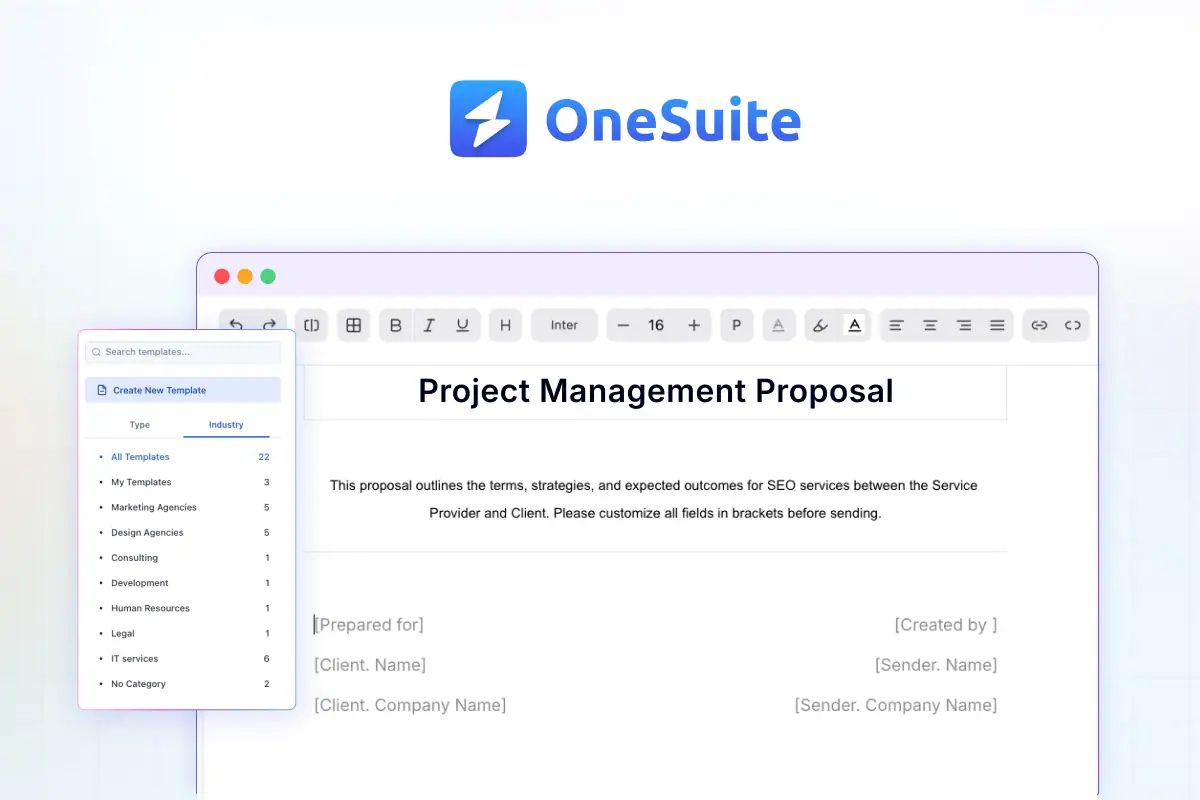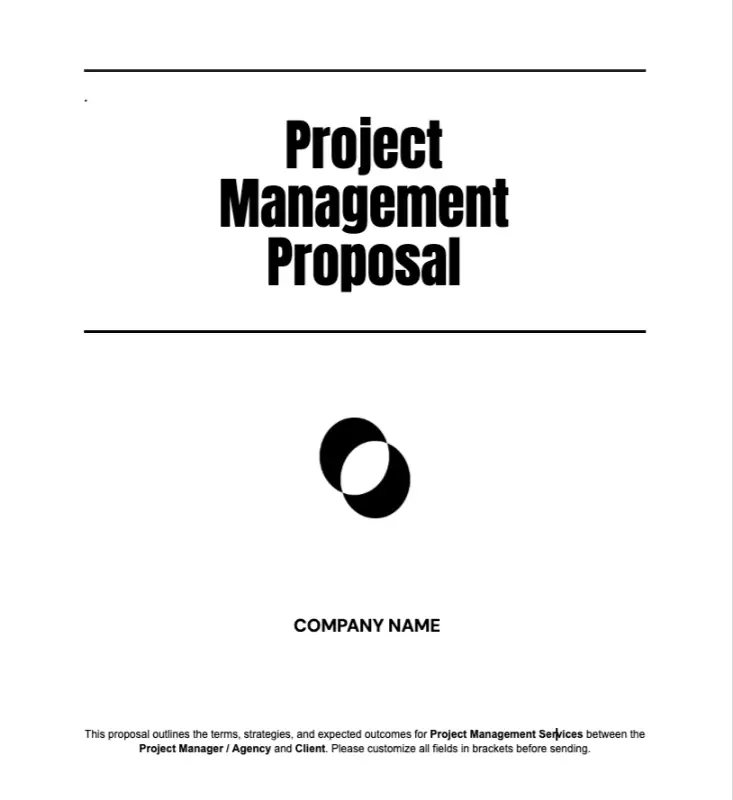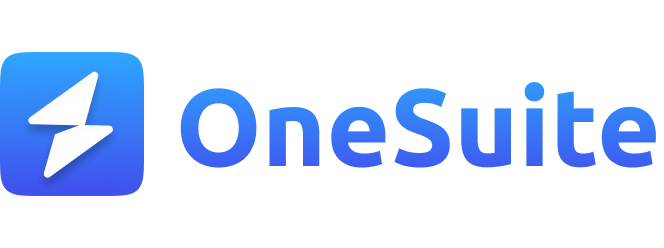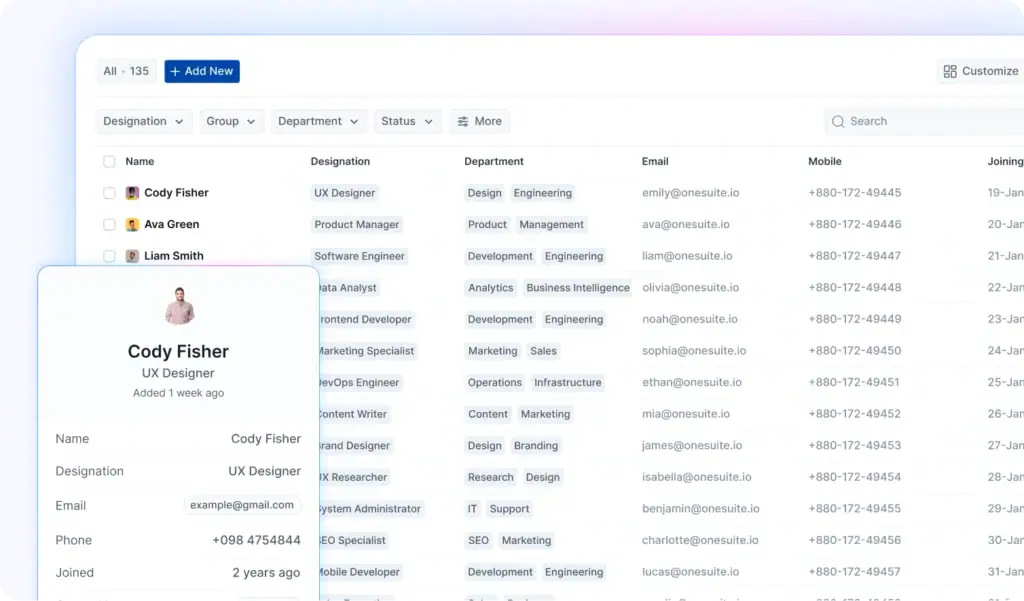
Are You Ready for Your Next Project?
You’ve already had the first two meetings with your client, discussed the project scope, and now it’s time to take the next big step , preparing your Project Management Proposal.
This document is more than just a formality; it’s the blueprint that sets the tone for the entire project. It outlines everything, from the proposal letter to the client’s problem and your solution, the timeline, and the payment structure.
This proposal doesn’t just help you present your plan, it builds trust and reinforces your commitment to a successful partnership.
By providing a clear path forward, you make it easier for your client to see how you will deliver on your promises.
Whether you’re a digital business owner or a project manager, this project proposal template is designed to make the process easier and more professional. It’s the perfect tool for presenting your project clearly and confidently.
Let’s get started and make your next project a success.
Free project management Proposal Template (Download)
Before we dive in—if you’re here for the contract, go ahead and grab it now:
What is proposal in project management?
A project management proposal is a document that outlines the key details of a project, including the work scope, methods, timeline, teams, payment terms, and goals. It serves as a blueprint that aligns both the project manager and client on expectations and responsibilities.
A well-crafted proposal can be a powerful tool for attracting and converting new clients, as it provides clarity and shows professionalism.
A strong proposal increases the likelihood of winning the project by setting clear expectations from the start.

Project Management Proposal: Essential Points and Template Overview

When writing a contract for a new project, it’s crucial to include the following essential points in your project management proposal. This ensures all details are covered, and the client is fully informed and aligned.
A well-structured proposal helps foster collaboration and sets the foundation for a successful project.
Key Elements to Include in a Simple Project Management Proposal:
1. Cover Letter
The cover letter is a critical part of your proposal. It provides an introduction to the project, sets the tone for the document, and gives a brief overview of what the proposal includes. The cover letter should be professional, clear, and concise.
What to Include in the Cover Letter:
- Project Overview: A brief summary of the project and its importance.
- Purpose of the Proposal: Why you’re submitting the proposal and how it aligns with the client’s needs.
- Call to Action: A prompt for the client to proceed with the next steps or request further clarification.

2. Project Summary
The Project Summary is a critical part of your proposal, as it sets the stage for the entire project. It’s where you demonstrate that you not only understand the client’s needs but also have the right solution to solve their challenges.
Client’s Problem
Start by rephrasing the client’s main goal, showing that you truly understand their desired outcome. This is where you align the client’s core issues with the project’s objectives.
Focus on what the client is struggling with and how these issues are affecting their business.
For example, the client’s goal might be:
“To enhance the user experience and increase the number of clients contacting your business through the website.”
Then, pinpoint the current problem:
“Currently, only 1.5% of website visitors reach out via the contact form, which limits your ability to convert traffic into leads and, ultimately, paying clients.”
The goal here is to show empathy by rephrasing the problem in simple terms, so the client feels understood. Avoid jargon—speak the client’s language.
Solution
Next, describe your solution, emphasizing how it will address the client’s core problem. Here, focus on the benefits rather than technical details to make the solution more relatable and valuable.
For example:
“By revamping the website with a cleaner design, improved navigation, and clear calls to action, we aim to double the contact form submissions to at least 3% of visitors.”
To make the solution more tangible, outline measurable results:
“This could result in an additional 50 inquiries per month. With an average client value of $1,500, this could lead to an extra $75,000 in revenue annually.”
By aligning your solution with measurable results, the client can visualize the potential impact. The solution should clearly demonstrate how it will solve the client’s problem and help achieve their business goals.
3. Deliverables and Timeline
The Deliverables and Timeline section is crucial in a project management proposal as it sets clear expectations for both the project manager and the client.
It outlines the key tasks, deadlines, and milestones, ensuring everyone is aligned and the project progresses efficiently.
Defining the Scope of Work:
Start by clearly defining the scope of work. List the main deliverables, such as design concepts, development phases, testing, and any additional services you’ll provide.
This will help the client understand what to expect and ensure you’re both on the same page about the work involved.
Establish Start and End Dates:
- Start Date: Specify the exact date the project officially begins. This sets the tone for the entire project timeline.
- End Date: Clearly mark when the final deliverables will be handed over to the client. The end date helps manage expectations and gives the client a clear target for completion.
See Also: Explore the best task management software for your design project.
Breaking Down the Project Into Milestones:
Break the project into key milestones to track progress. Milestones serve as major project checkpoints that signify the completion of critical phases.
This breakdown ensures that both the client and project manager can monitor the project’s progression efficiently.
Example milestones might include:
- Design Phase: Initial concepts and revisions (with a specific date).
- Development Phase: Coding and content integration (with a specific date).
- Testing Phase: QA and bug fixing (with a specific date).
- Launch: Final handover and project closure (with a specific date).
Tracking Progress:
By outlining the milestones and estimated delivery dates, both you and the client will be able to track progress easily. This provides visibility into the project’s advancement and ensures that all parties are aware of upcoming deadlines
4. Payment Terms
Payment terms are a crucial part of any project management proposal. They outline how the client will compensate for the services provided, ensuring both parties are aligned on expectations and deadlines.
Here are the key payment options available:
Payment Structure Options:
We offer flexible payment structures to suit your needs:
- Option 1: Installment-Based Payments (Recommended)
- 30% Upfront Payment: Due upon agreement signing to initiate the project.
- 30% Mid-Project Payment: Due at the completion of the project’s first phase.
- 40% Final Payment: Due upon project completion and delivery of final deliverables.
- 30% Upfront Payment: Due upon agreement signing to initiate the project.
- Option 2: One-Time Payment
A single payment for the entire project upon agreement. This option offers simplicity and clarity for clients who prefer one upfront payment for the entire scope of work. - Option 3: Solution-Based Payment
Payments are tied to specific project milestones or deliverables. Clients pay based on the completion of agreed-upon stages, ensuring that payments are linked to results.
Late Payments:
Late payments will incur a fee of [X]% per month. Any delay in payments may result in a temporary pause of the project until the outstanding balance is cleared.
Invoice Solutions:
For easy and seamless payment management, we use OneSuite to handle invoicing. With OneSuite, clients can receive invoices, track payments, and make secure payments directly through the platform.
💡 Sign up for a free 14-day trial of OneSuite to access these features and simplify the payment process.
5. Case Study
Incorporating case studies into your project management proposal is a powerful tool for building credibility and trust with potential clients.
Showcasing past projects, particularly those with positive client feedback, helps demonstrate your ability to deliver tangible results.
A strong case study can provide real-world evidence of your expertise and reassure the client that you’re equipped to manage and execute their project successfully.
5. Terms and Conditions
The Terms and Conditions section is essential for establishing clear expectations and responsibilities between the project manager and the client.
This section is crucial for ensuring that both parties are aligned on the project’s scope, deadlines, payments, and legal considerations.
It also includes important office policies and restrictions to avoid any misunderstandings during the project.
Key Sections to Include:
- Review Conditions: Define the process and frequency for project reviews and feedback sessions.
- Timely Delivery: Specify the project’s start and end dates, as well as important milestones and deadlines to ensure the project stays on track.
- Payment Terms: Outline the payment structure, including deposits, milestone payments, and the final payment, and define the consequences for late payments or non-payment.
- Ownership Rights: Clarify who owns the intellectual property and final deliverables once the project is completed and paid for.
- Confidentiality Agreement: Establish confidentiality terms to protect sensitive information shared between both parties during the project.
- Governing Law and Regulations: State which jurisdiction’s laws govern the contract and where any legal disputes will be resolved.
- Termination Clause: Outline the conditions under which either party can terminate the contract and any associated penalties or obligations.
- E-Signature: Include provisions for electronic signatures, making the agreement legally binding.
- Office Policies and Restrictions:
- Workplace Policies: Clearly outline any relevant office policies, including working hours, communication expectations, and access to team members or resources.
- Client’s Restrictions: Address any restrictions or guidelines set by the client’s office, such as access to certain areas or confidentiality requirements.
- Work Scope Restrictions: Specify any limitations on the scope of work, such as boundaries on additional requests or extra work beyond the initial agreement.
- Workplace Policies: Clearly outline any relevant office policies, including working hours, communication expectations, and access to team members or resources.
6. Signatures and Agreement
Conclude your project management proposal by guiding the client on the next steps. Before proceeding with e-signing, encourage the client to carefully review the entire proposal to ensure all details align with their expectations.
Clearly explain the next steps, such as approving the proposal, scheduling a project kickoff meeting, or reaching out for any questions or clarifications.
A strong call to action ensures both parties are aligned and ready to move forward, setting the stage for a smooth project launch and a successful collaboration.
With the OneSuite Project Management Proposal Template, you can finalize and send the proposal to the client for e-signing in just a few minutes, making the process quick and efficient.

Simplify Your Next Project Management Proposal with OneSuite
Now that you know what to include in your project management proposal, make the process even easier with OneSuite’s all-in-one document hub for proposal templates.
Why choose OneSuite for your project proposal needs?
OneSuite is a comprehensive agency management platform that combines CRM, project management, document hub, invoicing, and client portals—everything you need to streamline your project management efforts.
From client onboarding to offboarding, OneSuite ensures a smooth and efficient collaboration with your clients, making project management simple and hassle-free.
With just a few easy steps, you can create, customize, and send your project management proposal to clients. Thousands of agencies, freelancers, and solo professionals trust OneSuite.
See why they love our platform by checking out our 5-star reviews on G2.
We offer an easy-to-use, affordable solution perfect for mid-level agencies, freelancers, and solo professionals. Get started today with a free 14-day trial of OneSuite and simplify your project management proposal process!
FAQs
What is the best way to get a proposal approved?
Here are the 5 hook points for your project management proposal approval:
- Know Your Stakeholders: Tailor your proposal to address the needs of everyone involved.
- Align with Approval Processes: Make sure your proposal fits the organization’s approval guidelines.
- Validate Your Ideas: Ensure your solution fits seamlessly within the broader business strategy.
- Present with Impact: Focus on what matters most to stakeholders and highlight measurable results.
- Prepare for Objections: Be ready with responses to questions or concerns from decision-makers.
What is a Proposal?
A proposal is a document that aligns the methods, goals, and expectations of both parties involved. It’s a way to define the problem and provide solutions while ensuring both parties are on the same page.
The proposal includes key details like the scope of work, payment terms, timelines, and other conditions that define how the project will be carried out.
Why Use a Project Management Proposal?
A project management proposal is used to ensure both parties are committed to solving the problem and achieving the project’s goals.
It helps build trust and ensures mutual satisfaction by clearly defining expectations, responsibilities, and the approach for delivering solutions.
What is the Difference Between Project Proposals and Business Plans?
Project Proposals are formal documents that outline the scope of work, timeline, and payment terms for a specific project. They focus on solving a particular problem or achieving a goal within a defined period.
On the other hand, Business Plans are broader documents that outline a company’s long-term goals, strategies, and overall direction. They provide an in-depth look at the company’s mission, vision, and operational strategies to ensure long-term success.
Find a Better Way to Grow
OneSuite streamlines projects, clients, and payments in one place, making growth hassle-free.

